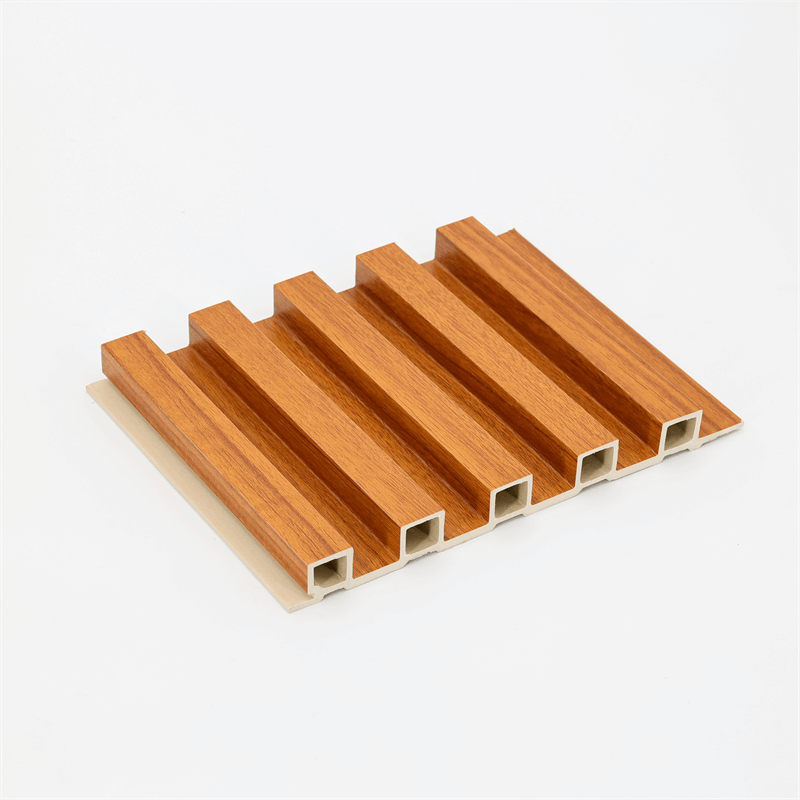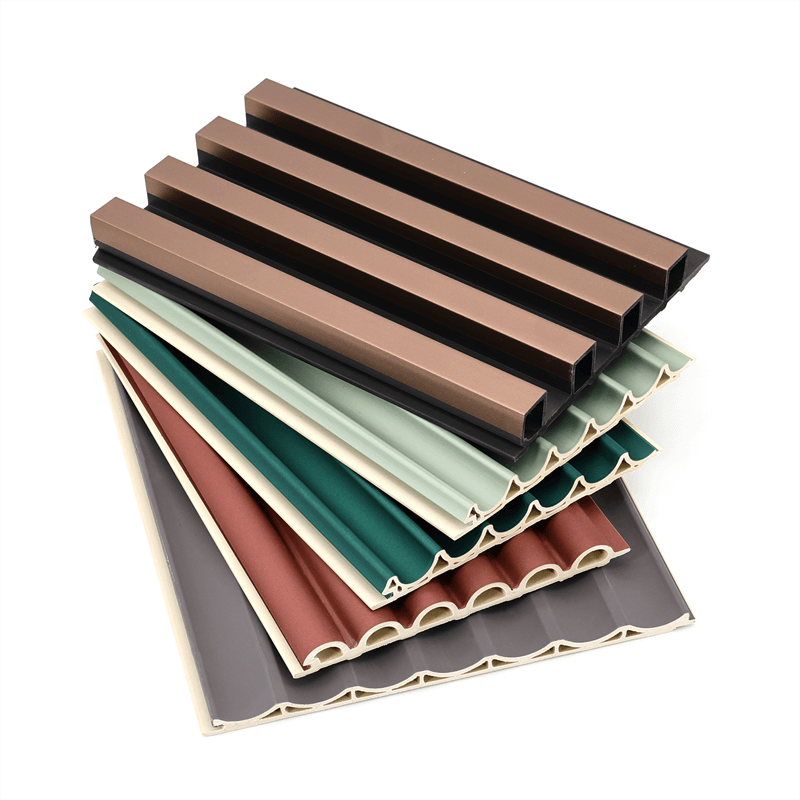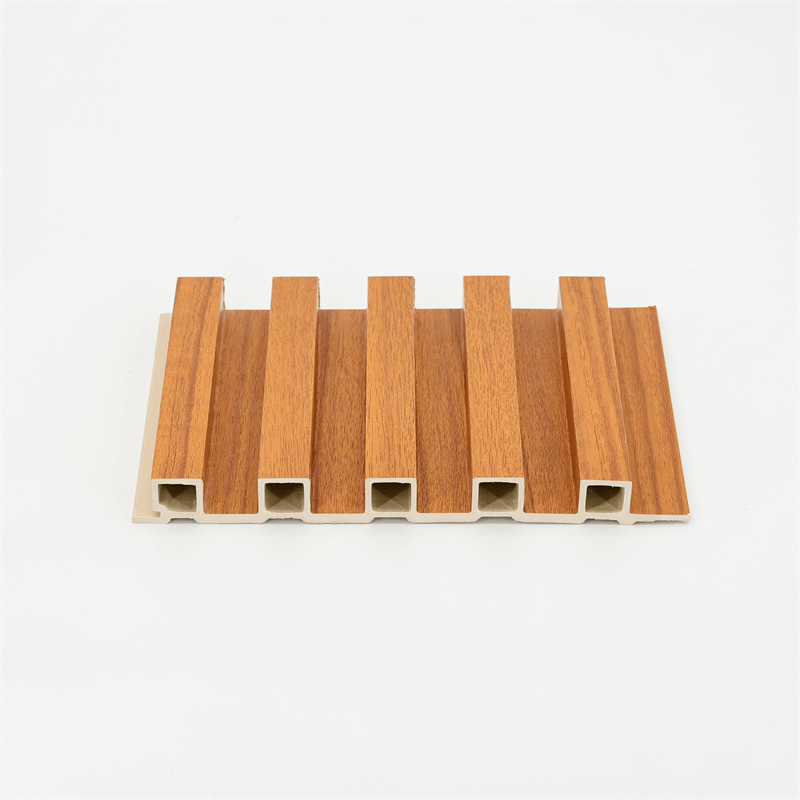Sustainable architecture and green building practices have become increasingly important in today’s world, as we seek to minimize our environmental impact and promote the efficient use of resources.
Wood Plastic Composite (WPC) wall panels offer a valuable solution for sustainable architecture, combining eco-friendly materials, energy efficiency, and design versatility.
This essay explores the role of WPC wall panels in sustainable architecture and green building practices, focusing on their use of recycled materials, energy efficiency, indoor air quality benefits, and contribution to renewable design.
The essay is divided into four sections, each highlighting specific aspects of WPC wall panels in sustainable architecture.
I. Use of Recycled Materials
- Recycled Wood Fibers and Plastic: WPC wall panels are composed of a combination of recycled wood fibers or sawdust and recycled plastic materials. These panels effectively utilize waste materials that would otherwise end up in landfills. By using recycled materials in the production of WPC panels, the demand for virgin resources is reduced, contributing to the conservation of natural resources and minimizing the environmental impact of construction and renovation projects.
- Waste Reduction: The use of WPC wall panels in sustainable architecture helps reduce waste generation. Traditional wall coverings, such as gypsum boards or vinyl sidings, often result in significant waste during installation and renovation. In contrast, WPC panels can be cut and customized on-site, minimizing waste and optimizing material usage. This waste reduction contributes to sustainable practices and supports a circular economy.
II. Energy Efficiency
- Thermal Insulation: WPC wall panels provide excellent thermal insulation properties, contributing to energy efficiency in buildings. The panels help regulate interior temperatures by reducing heat transfer through walls. This insulation effect reduces the need for excessive heating or cooling, resulting in energy savings and reduced greenhouse gas emissions. By incorporating WPC panels into sustainable architecture, buildings can achieve improved energy performance and reduce their carbon footprint.
- Reduced Cooling Loads: In hot climates, the use of WPC wall panels can help reduce cooling loads. The panels’ thermal insulation properties minimize heat gain from outside, reducing the reliance on air conditioning systems and decreasing energy consumption. By reducing the cooling loads, buildings can achieve greater energy efficiency and promote sustainable practices.
III. Indoor Air Quality Benefits
- Low VOC Emissions: Volatile Organic Compounds (VOCs) are chemicals that can be released from building materials and adversely affect indoor air quality. WPC wall panels have low VOC emissions, contributing to healthier indoor environments. The use of eco-friendly materials in WPC panels minimizes the presence of harmful chemicals, promoting better air quality and reducing the risk of respiratory issues and allergies for building occupants.
- Mold and Mildew Resistance: Moisture accumulation in buildings can lead to the growth of mold and mildew, which can have detrimental effects on indoor air quality and human health. WPC wall panels offer inherent moisture resistance, preventing the growth of mold and mildew. This resistance enhances indoor air quality and reduces the need for harsh chemicals or frequent maintenance to address mold-related issues.
IV. Contribution to Renewable Design
- Design Versatility: WPC wall panels offer a wide range of design options, allowing architects and designers to incorporate sustainable elements into their projects. The panels are available in various colors, finishes, and textures, providing flexibility to achieve desired aesthetics while promoting sustainable design principles. The use of WPC panels enables the integration of natural-looking materials into the built environment, creating a connection to nature and enhancing the overall ambiance of sustainable architecture.
- Longevity and Durability: Sustainable architecture aims to create long-lasting and durable structures. WPC wall panels are engineered to withstand the rigors of the environment, including weather conditions and wear and tear. The panels’ durability ensures their longevity, reducing the need for frequent replacements and minimizing waste generation. By choosing WPC panels for sustainable architecture projects, designers contribute to the longevity of structures and promote responsible resource consumption.
WPC wall panels play a significant role in sustainable architecture and green building practices.
Their use of recycled materials, energy efficiency, indoor air quality benefits, and contribution to renewable design make them a valuable asset in creating environmentally friendly structures.
By incorporating WPC panels into sustainable architecture, we can minimize waste generation, conserve natural resources, and reduce our carbon footprint.
Additionally, the energy efficiency and indoor air quality benefits of WPC panels contribute to healthier and more sustainable built environments.
As we continue to prioritize sustainability and green building practices, WPC wall panels offer a practical and eco-friendly solution for architects, designers, and builders striving to create a more sustainable future.

In conclusion, WPC wall panels have emerged as a key component in sustainable architecture and green building practices.
Their incorporation in construction projects brings numerous benefits, ranging from the use of recycled materials to energy efficiency, indoor air quality improvements, and renewable design possibilities.
By utilizing recycled wood fibers and plastic, WPC wall panels help reduce waste and conserve natural resources, supporting a circular economy.
Their energy-efficient properties, such as thermal insulation and reduced cooling loads, contribute to lower energy consumption and greenhouse gas emissions, promoting a more sustainable approach to building design.
The low VOC emissions and mold resistance of WPC panels enhance indoor air quality, creating healthier environments for building occupants.
These panels also offer design versatility, allowing architects and designers to incorporate sustainable elements and create aesthetically pleasing structures that align with renewable design principles.
As the demand for sustainable and environmentally conscious construction practices continues to grow, WPC wall panels present a practical solution that balances style, functionality, and eco-friendliness.
By choosing WPC panels, architects, designers, and builders can contribute to the reduction of waste, energy consumption, and environmental impact associated with traditional construction materials.
In conclusion, the role of WPC wall panels in sustainable architecture and green building practices is pivotal.
Their use not only addresses environmental concerns but also enhances the overall quality, efficiency, and longevity of structures.
By embracing WPC wall panels, we can create sustainable built environments that prioritize resource conservation, energy efficiency, indoor air quality, and innovative design.
It is through such sustainable practices that we can shape a better and more sustainable future for generations to come.


